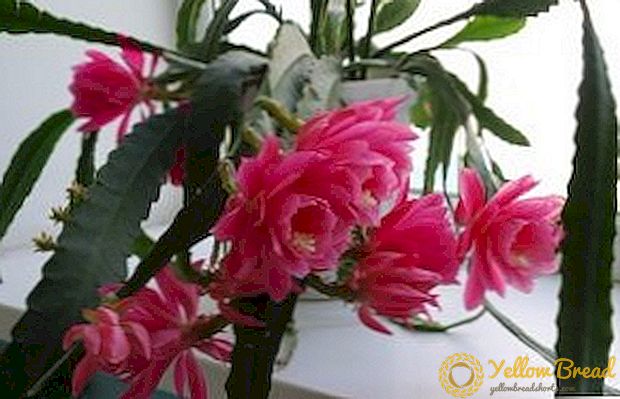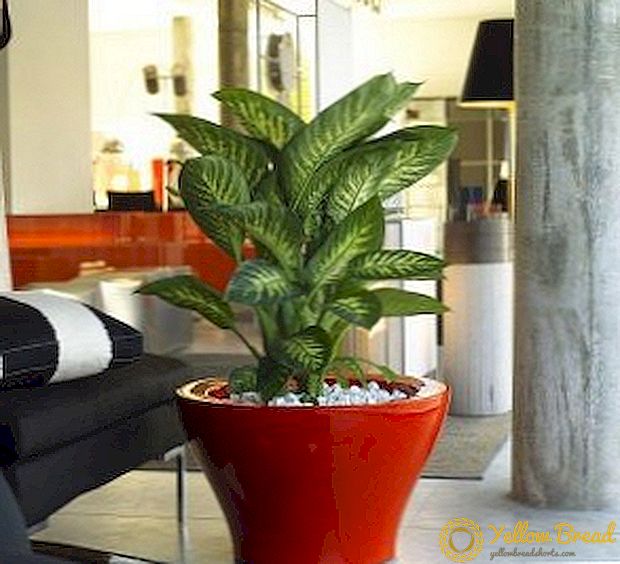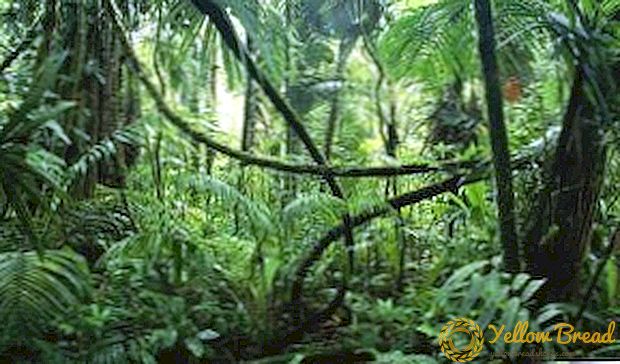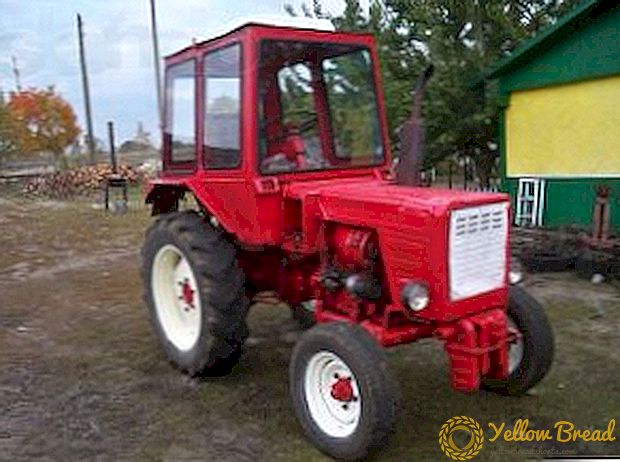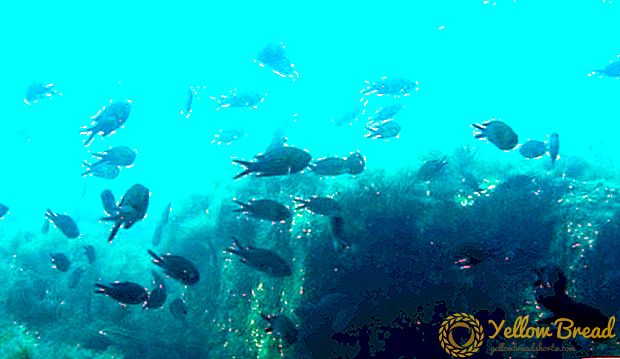 To avoid disappointment and disappointment, care for such a capricious tree as a peach should be exemplary-correct, without neglecting the little things.
To avoid disappointment and disappointment, care for such a capricious tree as a peach should be exemplary-correct, without neglecting the little things.
Therefore, we consider in detail a very important operation - peach pruning, performed in the spring.
In spring, the peach is pruned to form a natural crown near the tree, that is, so that it would be comfortable to look after the plant, spray it, and collect ripened fruit.
Pruning affects the size of peaches, they grow quite large fruits, appetizing and fragrant.
- Timing and purpose of pruning
- Peach pruning for different years
- Spring pruning, in the year of planting
- Second year pruning
- Third year pruning
- Fourth year pruning
- Trimming scheme
- Special features
- Instruments
Timing and purpose of pruning
The best time to trim It is considered the interval between the beginning of the swelling of buds and the beginning of flowering. This interval is approximately two to three weeks and depends on the variety. The most favorable period can be considered the appearance of pink buds and blooming, it is equal to one week. Right now fruit buds are clearly distinguished, and the risk of infection with cytosporosis, through open sections, becomes minimal at the tree.
Primary goalswhich are fraught with peach pruning are considered:
• Increase the interval of fruiting and the formation of a decorative type of the plant.
• Maintaining and preserving wood in a healthy state.
• Regulation of the balance between the tree crown and its roots.
• Pruning of the tree promotes early peach blossom and fruiting
Peach pruning for different years
Spring pruning, in the year of planting
That spring, when it was planted, during the shaping of the crown into a vase, the tree should shorten to a height of 60-70 centimeters (20 centimeters higher than the conventional bole length).

Gain, which is located at the top, should be with a wide angle of discharge. You need to select two more increments, located below the top, with the same requirements. They are cut to 10 cm, on the outer kidneys. Beginning shoots on the trunk and near the shortening site at the trunk, they are removed immediately after bud break. Shoots that began to grow and develop into the inner part of the crown are removed in the summer.
Second year pruning
For peach trees growing in the second year, every effort is made to increase or maintain the optimal slope of the skeletal branches. Newly formed continuation increments, shortened to 60-70 cm. The gains are stronger, growing at the bottom, and at the top, you need to remove, and those that grow from the side - thin out, leaving at the same time every 15 cm, and remove in length by two buds. In the summer period it is advised get rid of fat shoots, which are located in the center of the crown, and regulate the coordination of the main branches of the peach.
Third year pruning
On the peach skeleton branch, at the top, choose two very powerful second order branches, they are cut to 60 cm from the place where the main branch began to split. And above the top branch, the main part of the conductor is removed. On the top and bottom of the skeletal branches remove powerful shoots.
If the length of annual gains reaches 80 cm, then they are thinned, pruned into two buds, to form the next fruit link. The rest of them are applied on non-permanent fruit branches, which, in turn, are shortened by 8 buds. For maximum prosperity of the lower shoot, which grows to pinnings weak, escape at the top pruned to 50 cm.
On the twigs, which were shortened last year by two buds, the growth that grows upwards, is shortened for fruiting, and the lower growth by two buds.it the first step to the formation of the fruit linkwhich in the future will become the main constituent element of fruiting in the adult peach tree.
Fourth year pruning
The fourth, is considered the last year of peach growth, in which it is time to complete the formation of a vase-like crown near the skeleton of a tree. On the upper part of the second-order skeletal split, two good third-order ramifications should be selected and shortened by 1/3 of the original length. Also clean and powerful growth growths of the upper and lower surfaces of the branching tree and fat, located at the base of the trunk.

On divisions of the second order the formation of fruit links ends, and in divisions of the third order, the growths are thinned, some are cut very shortly by 2 buds, the rest are left long by 7-8 groups of buds. They are used as non-permanent fruit bearing branches.
On the fruit links of the first order those parts that no longer bear fruit are removed from the peach. Also, the branches of the lower growth, which were cut short in the spring for the third year after planting, are cut into two buds, which are located below, and on the upper growths, 7-8 groups of buds are removed to start the formation of future fruiting.
Trimming scheme
Always thought that optimum crown for a peach tree is a cup-like crown shape. But such a crown of a tree takes up a lot of space in an orchard, four times more, it is very laborious, as it takes a lot of time and labor to form it. Suitable for country gardens, i.e. small, but completely unsuitable for large gardens.
Peach tree parameters can be considered: shtamb 50-60 cm, the lower tier is 20 cm between the base of 3-4 skeletal branches. On each branch leave two half-skeleton branches of the second order, at a distance of 30 cm from each other. Above the first tier is laid the second tier of semi-skeletal branches, in an amount of up to five. For 5 years of growth of a peach tree, its height should be from 2.5 to 3 meters.
Special features
Highlights trim can be considered:

• Cut peach recommended in spring.The branches are removed so that the tree takes the bowl-shaped crown.
• When cutting branches, attention should be paid to the number of fruit-bearing branches. With a sufficient number of skeletal branches begin to bare. They are shortened until two buds remain.
• After harvesting, autumn tree pruning is carried out.
• Because the peach tree bears fruit, the number of mixed branches is regulated. With abundant fruiting, 80 branches are left, and with an insufficient amount of fruits, it is desirable to leave them in an amount of about 200.
Features pruning young tree:
• The main peach shoot is pinned in the case when there are young shoots on the seedlings.
• When planting a peach in the ground, leave three or four shoots located at the bottom of the tree, all others are removed.
• In the spring, the second year after planting, the selected shoots are cut to 1 / 3-1 / 4 of the original length.
• The branches located in the center of the peach are cut as short as possible in the third year.
• Horizontal shoots necessarily cut, as they do not bear fruit.
Instruments
When pruning such a delicate tree like a peach, you should always remember that it is very reacts painfully to cutsand therefore pruning is done carefully and every step is thought out. The tools that will be trimmed peach need must be disinfected in solution Bordeaux mixture. All wounds and cuts of the tree should be immediately covered with garden pitch. Tools used to trim the peach, must be serviceable, stored in a dry place and not rusty, they need to be ground before starting work. When carrying out garden work, it is necessary to strictly observe the rules of technical safety.

When pruning a peach can be useful such garden accessories:
1) Pruner. It is used to remove thin branches that resemble scissors with a curved blade. Two types of pruners are distinguished: with a parallel blade (used for any type of wood trimming) and one-sided cutting (used for pruning shoots and thinning the crown).
2) Lopper. It looks like a secateurs with long handles. They remove the branches located at the top.
3) Garden saw. Its length is 35 cm, the teeth are hardened, and it has a crescent shape.
4) Chainsaw. It is convenient to make large volumes of work with it, trees can be cut without using stairs even at a five-meter height.
5) Garden knife they cut off one-year-old growths, remove green shoots of a young tree, smooth out scrap or sawing sites.
6) Brush cutter pruned shrubs, hedges, great for forming crown. Brush cutters are distinguished by the type of engine. They are fuel, electric or battery.
7) Shredder used for recycling garden waste. It is very convenient for them to dispose of cut branches, leaves, weeds. In the end, this garbage is used to mulch the trunk circle and the aisle. They are of two types: gasoline and electric.


